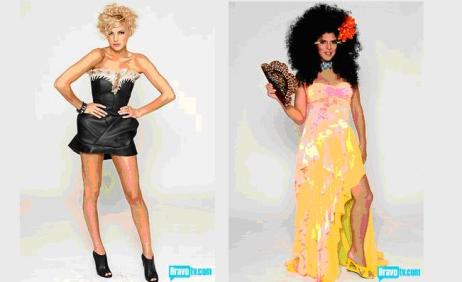"Project Runway" Offers Template for Marketing Best Practices'- Jory Des Jardins - MediaBizBlogger

Originally published September 22, 2008.
Every year, my company distributes a feedback survey to the attendees of our annual conference, who are mostly women who blog—some of the most opinionated and influential word-of-mouth sources that exist. And every year I'm amazed by how passionate our community is about all aspects of the event—from the amount of protein available at breakfast to the extent to which we recycle. And I'm even more surprised at how diametrically opposed their opinions are on, well, everything.
It's not easy trying to move forward on decisions when our audience shares a passion for one thing (blogging) but is so diverse in other ways. This reality sensitizes me to the challenges of brands who are trying to do good by soliciting feedback from their most influential customers—those who engage in social media. No matter how hard the brand tries, by virtue of engaging the community it has opened the door to higher expectations and lots of conflicting messages. While one customer may be in love with your new brand enhancement, another may hate it, another may not care. And if this rush of opinion is not responded to right away, everyone is alienated. "Why'd you bother to ask us, huh?"
This occurred after Jet Blue'sbarrage of new media apologies after a spate of ridiculously delayed flights left thousands of customers peeved. When Jet Blue failed to increase its on-time rating after all the public promises, the Blogosphere was more critical of the airline than of those who had even worse on-time records. We can always refer back to the online record—JB's customer bill of rights, for instance, or the video on YouTube of CEO David Barger promising things would change.
A fear I hear quite often from marketers is that by engaging in communities they are now on the hook for making a community feel heard. And let's be honest, can you really make hundreds of thousands, even millions, of people feel heard? Can you magically re-arrange your operations to accommodate every blogging Toni, Debbie and Harriet who bothers to write about you? No, you can't. And I don't suggest that you try. By not trying to please everybody, you risk losing a few customers, but by trying to please everybody online you lose your point of view—what made you resonate with your customers in the first place.
There's an incredibly fine line between smart market outreach and listening too much. Perhaps the best way to describe the distinction between the two is through something that I've found to be quite the metaphor for best marketing practices, even life, perhaps … the television reality show Project Runway.This show often requires the contestants, aspiring fashion designers, to create something for clients, who have included female wrestlers, drag queens, and teenage girls. And it's always tense and fun to watch how the designers struggle to create something that the client considers wearable while also establishing a point of view.
Designers who lose tend to insist on their visions at all costs, dismissing the client's requests, as do designers who bend over backwards to give a client what they think she wants, with no hat tips to their own personal style. Think of this season's Daniel whose insistence on sticking to his self-proclaimed high taste level led to a lackluster drag queen outfit that seemed tone deaf next to the fantastical, over-the-top creations of his competition (see images). It seemed he missed the point of Drag and made his own taste look bad, too.
Historically the winning designers delight the client and judges while still showing off their signature statements—be it Season 4 winner Christian Siriano's "fierceness," even when designing an outfit made of old Levis, or Leanne, who could still show off her devotion to refined, geometric lines, even while incorporating car seats in the skirt of a dress. (See above.) And the model still looked great in it.
The golden ticket for brands that publicly open themselves to user feedback is to be fierce and flattering at the same time. A point of view must be there, but so must a willingness to compromise juuuuuust a teensy bit on that vision to accommodate audience, customers, and community. The people that matter.
Earlier this year, Johnson & Johnson learned this with deep humility and my respect when they created an impressive custom event for Mombloggerscalled Camp Baby, enlisting prominent women to join them at corporate headquarters for two days of networking and sessions presenting their brands, but failed to provide child care for these women—an example of all fierceness and no flattery. They redeemed themselves by apologizing wholeheartedly to these women and trying their best to accommodate schedules.
In early 2007, Unileveropened the floodgates of public customer opinion with one of its most progressive brands, Dove, in a launch campaign for its new Cream Oil line. In conjunction with AOL, the brand sponsored an open video contest, for which anyone could submit a 30-second spot, with the winners being shown during the 2007 Oscars (a campaign my organization promoted). The next year, Dove ran the same contest, but this time provided art, music, and branding selections that users could incorporate into their submissions. Artistic heresy? I argue no. This is an example of a brand opening its doors to the public while still maintaining its point of view.
Can a company listen too much? Yes, if it also has nothing important to say.

